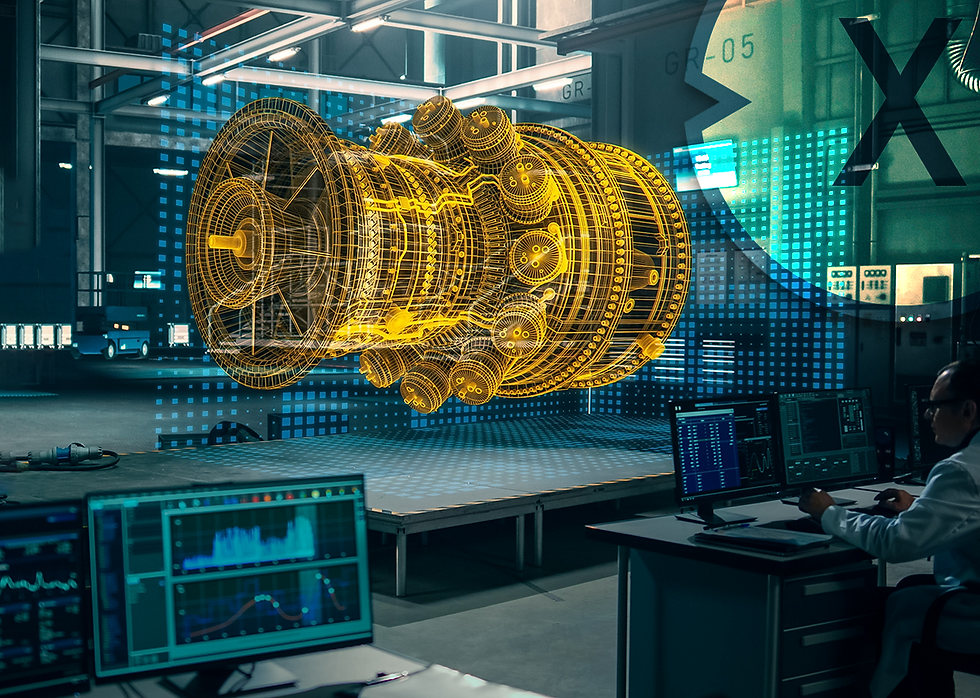How VR is Transforming Industrial Safety and Reducing Workplace Risks
- viroinnovation
- Feb 23
- 3 min read

The Role of VR in Industrial Safety
Ensuring workplace safety is a top priority in industries such as manufacturing, construction, oil and gas, and logistics. Workers often face hazardous environments that require specialized training and strict adherence to safety protocols. Traditional training methods can be costly, time-consuming, and sometimes fail to prepare employees for real-world risks. VR for safety in industry provides an innovative approach to training and hazard prevention.
Virtual reality immerses workers in realistic industrial scenarios, allowing them to practice emergency responses, equipment handling, and risk assessment without exposure to actual dangers. This approach improves learning retention and enhances workplace safety by reducing human errors and accidents.
Enhancing Hazard Recognition and Risk Assessment
Identifying potential hazards before they lead to incidents is essential in maintaining a safe work environment. VR simulations allow employees to explore virtual workplaces where they can recognize and mitigate risks in a controlled setting.
VR-based hazard recognition training includes:
Identifying faulty equipment and unsafe working conditions
Practicing correct safety procedures in high-risk environments
Responding to simulated emergencies such as fires or chemical spills
Understanding proper use of personal protective equipment
By training in a virtual environment, workers gain confidence and experience in handling safety challenges, leading to a reduction in workplace injuries.
Improving Emergency Response Training
Industrial settings require employees to be prepared for emergencies, including fires, machinery failures, and hazardous material spills. Traditional emergency response drills often disrupt operations and may not fully replicate real-world situations. VR for safety in industry offers a cost-effective and repeatable training method that immerses workers in emergency scenarios without real-world risks.
With VR training, employees can:
Practice evacuations and fire response in different facility layouts
Learn how to use emergency equipment effectively
Simulate first aid and accident response procedures
Improve decision-making under pressure in high-risk situations
Industries adopting VR for emergency training report higher preparedness and better response times, leading to improved workplace safety.
Enhancing Equipment and Machinery Training
Heavy machinery and complex equipment require hands-on experience to operate safely. Mistakes in handling industrial equipment can lead to costly damages, injuries, or fatalities. VR simulations enable workers to practice using machinery in a safe virtual setting before applying their skills in real environments.
VR-based equipment training provides:
Step-by-step guidance on machine operation and maintenance
Hands-on practice with virtual controls and interfaces
Troubleshooting exercises to prevent operational errors
Real-time feedback on performance and safety compliance
Companies implementing VR training for equipment use report fewer accidents, lower training costs, and increased operational efficiency.
Reducing Workplace Incidents and Compliance Violations
Strict safety regulations and compliance standards are essential for preventing workplace incidents and ensuring employee well-being. VR training allows companies to ensure workers fully understand and follow industry-specific safety guidelines.
Industries using VR for safety training experience:
Lower rates of workplace injuries and incidents
Improved compliance with safety regulations
Increased worker confidence in handling hazardous tasks
Cost savings by reducing physical training risks and material use
By integrating VR into safety programs, industries create safer work environments while maintaining high productivity levels.
The Future of Industrial Safety with VR
VR for safety in industry transforms how workers are trained and how companies manage risk. The ability to simulate real-world hazards, enhance emergency preparedness, and improve equipment training makes VR an essential tool for reducing workplace accidents. As industries continue prioritizing safety, VR will play a key role in shaping a safer and more efficient workforce.



Comments